Maya Attoun: Working End Standing End, Reinstalled
Curator: Irena Gordon
11/01/2024 -
18/05/2024
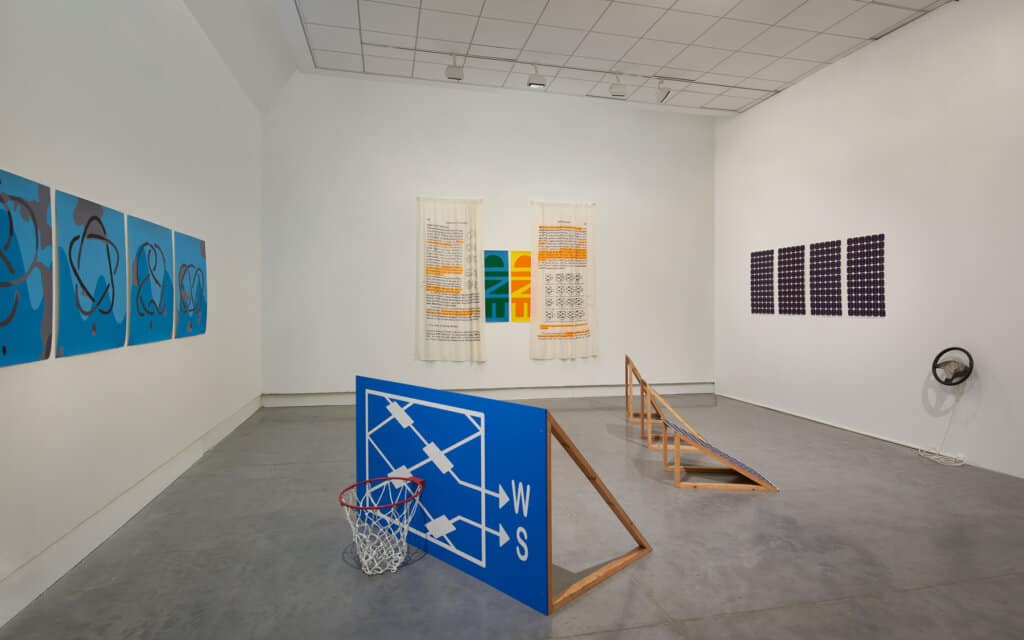
In collaboration with the Jerusalem Print Workshop
Working End Standing End is a current realization, at Petach Tikva Museum of Art, of a project by that name presented at the Jerusalem Print Workshop in 2019, where it concluded a two-year artist residency, during which Maya Attoun (1974–2022) created a body of screenprints, etchings ,and installations. Attoun’s oeuvre spans diverse media—drawing, painting, printmaking, installation, video, and sound—conducting an ongoing dialogue with the realms of literature and poetry, music and philosophy. Alongside etchings, a technique intrinsic to her work, here the screenprints stand out—a medium with which she experimented for the first time at the JPW, and created an array of works on paper as well as on textile, metal, and wood.
The project’s re-presentation is an opportunity to carry on an unfulfilled dialogue towards a show at the museum. At the same time, it is another interpretation of an artist-curator collaboration which began at the JPW. Working End Standing End is a knotting term: holding two ends of a rope, with one end “standing,” while the other end ties the knot. Physical knots—a necessary invention for countless uses, small and large—are intertwined in the history of mankind, not only in practical everyday areas, but also in the realms of research and thought, in spiritual and mystical contexts. knot theory, developed by mathematician Johann Carl Friedrich Gauss in the 19th century, likens mathematical models to physical three-dimensional knots encountered in everyday life, such as those in ropes or shoelaces. The knots are, in fact, diagrams; visual signs in a mathematical language capable of describing the simultaneous occurrence of phenomena that we perceive as occurring consecutively.
Lord Kelvin (William Thomson) and Peter Guthrie Tait sought to apply knot theory to the study of ether—an invisible substance, an electromagnetic field which pervades the Earth’s atmosphere and allows light waves to pass through—arguing that the atoms that make up our world are akin to “knots” in the “ether.” While the existence of ether was disproved in the 20th century, knot theory has since developed into an independent theory, one of whose offshoots is quantum theory and quantum entanglement.
Attoun was fascinated by knot theory since it embodies the inevitable tension inherent in visual representation of natural phenomena, intended to illustrate and comprehend them. At the same time, it necessarily conceals the impossibility of grasping reality in its entirety, and points out the partial blindness from which humans suffer, and with it the terror and thrill that accompany the constant search for the next clue. The exhibition is a journey through a landscape of concrete and metaphorical-emotional knots or links between the 19th- and 20thcentury worlds of science and culture. It introduces a coded iconographic map of images drawn from the mythologies of ancient Egypt as well as modern America, from music and popular culture, from scientific fields pertaining to solar panels, radio waves, celestial bodies, and physical forces of elevation and gravity, ranging between basketball and tarot cards, between mysterious magical symbols and slot machines.
Attoun is a “semionaut,” an artist inventing paths throughout contemporary global culture, as described by philosopher Nicolas Bourriaud. In Working End Standing End she sets out to sort and reclassify the world, while constantly changing the classification rules in a way that interferes with the act itself. She creates a language that constantly violates the attempt to introduce order and cohesion to things, forcing us to experience the sights, memories, sounds ,and sensations of existence differently. “It is only after you have come to know the surface of things”—concludes Mr. Palomar, the eponymous protagonist of Italo Calvino’s novel—“that you can venture to seek what is underneath. But the surface of things is inexhaustible.” Attoun explores the tangibility of the surface and the appearance of things through the graphic and poster-like aspects of the screenprint—the vivid color fields, the sharp contours—while delving into the depths through the material blackness of the etching. She harnesses printmaking techniques to distill the visual language, on the one hand, and to challenge the relations between image, form, color, text, and sound, on the other. In so doing, she paves unknown paths of physical and mental existence.
The works were printed and published at the Jerusalem Print Workshop
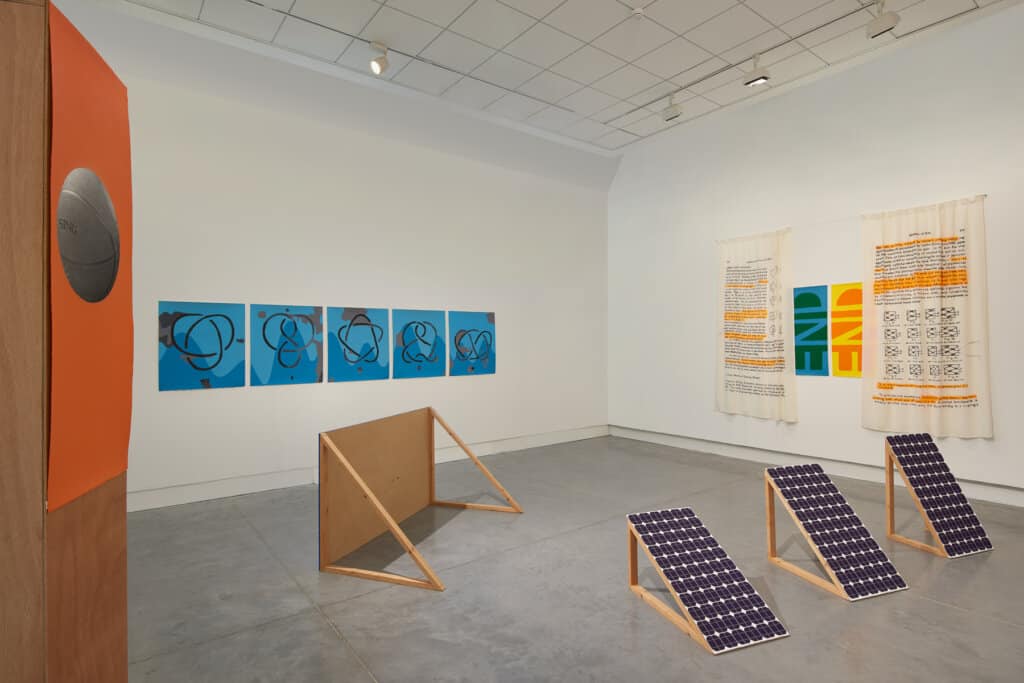
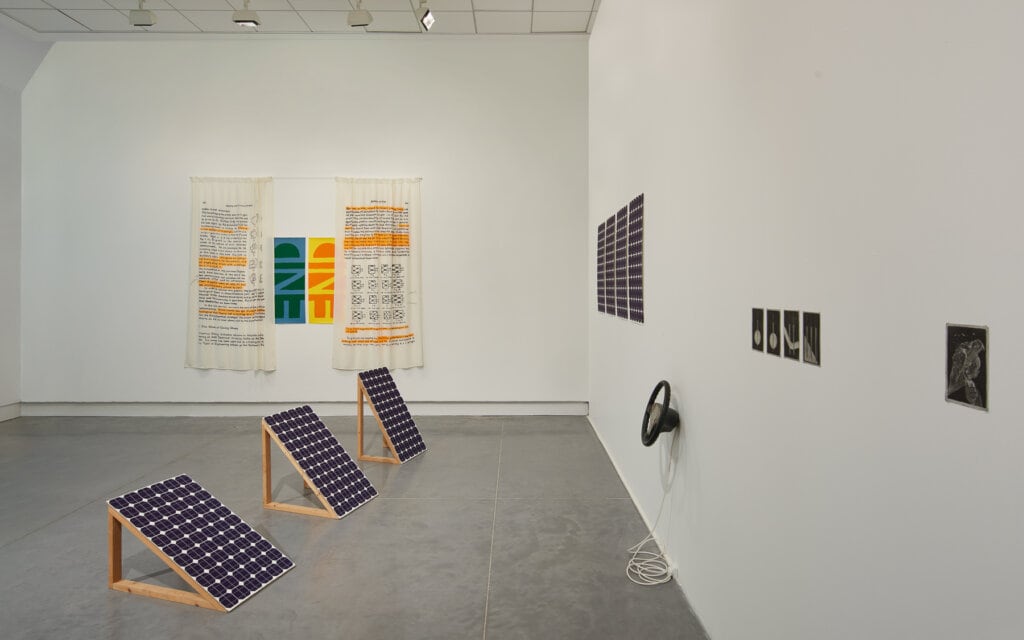
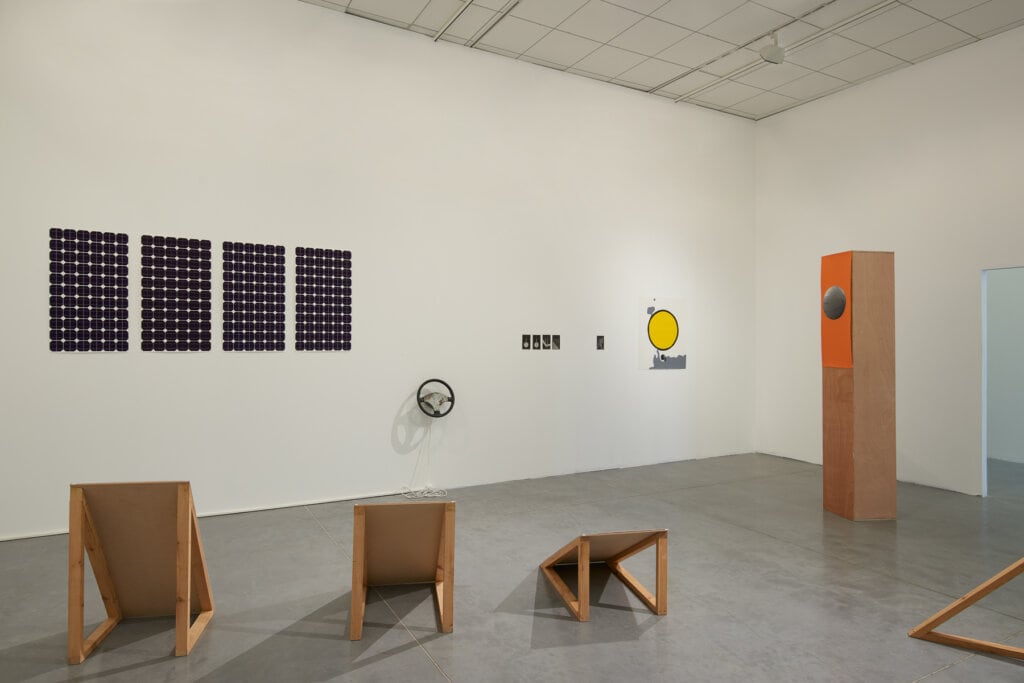
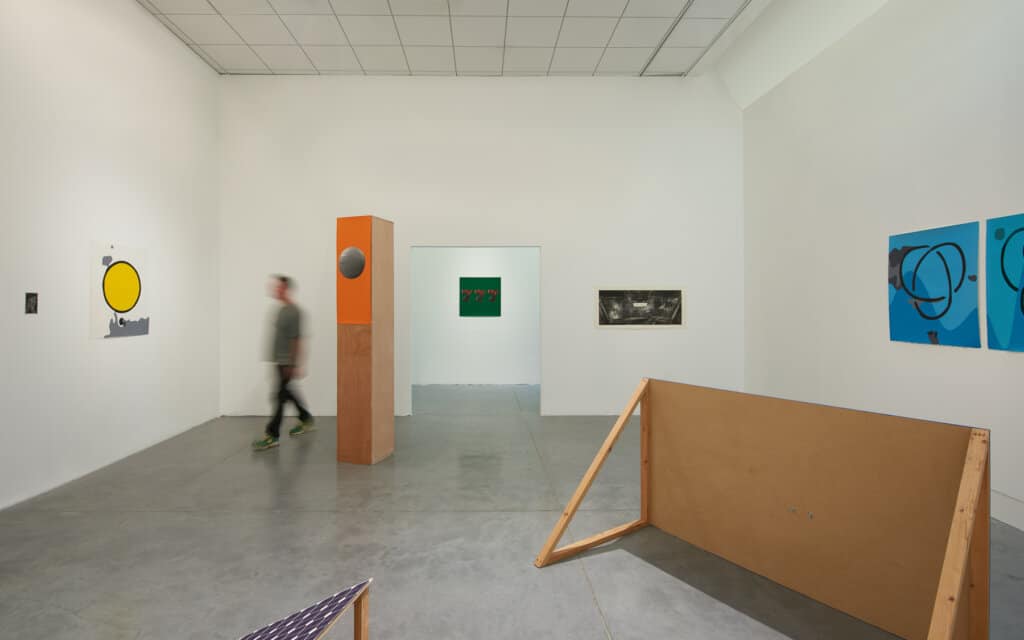
Installation photographs: Youval Hai

